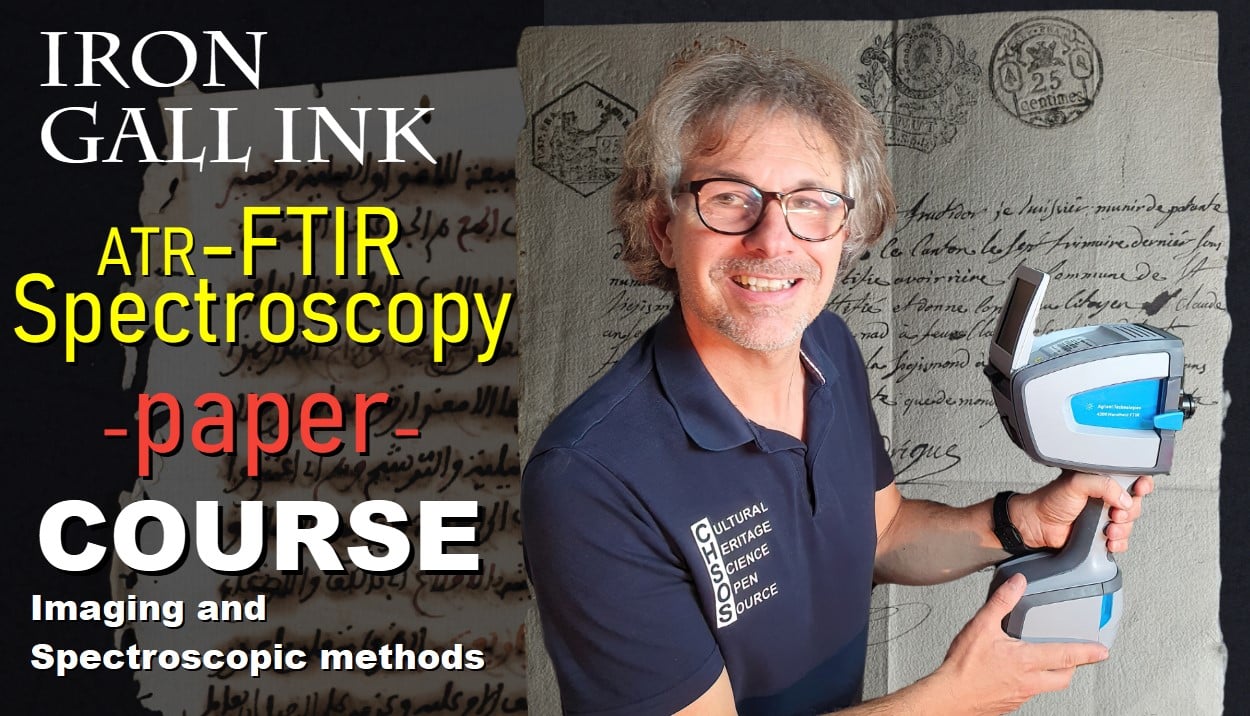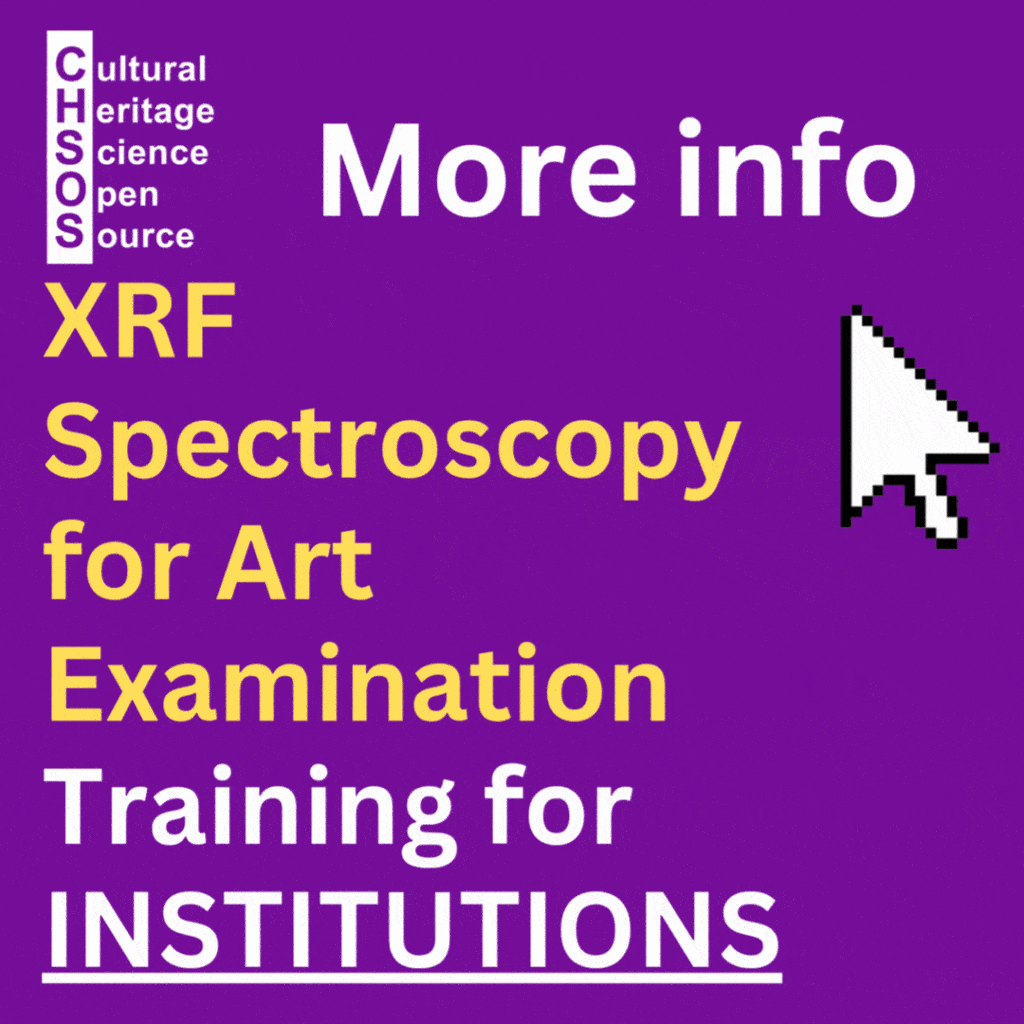
Lesson: ATR-FTIR Spectroscopy – Paper
This lesson explores the use of Attenuated Total Reflectance Fourier Transform Infrared (ATR-FTIR) spectroscopy in the study of historical paper and cellulose-based artifacts. ATR-FTIR allows for the non-invasive analysis of organic and inorganic compounds, particularly focusing on identifying cellulose in paper and detecting any treatments or additives. While ATR-FTIR is effective for analyzing the paper substrate, its application to iron gall ink yields limited success, as it primarily detects the cellulose signal.
Objectives:
- Understand the principles and practical application of ATR-FTIR spectroscopy in analyzing paper.
- Analyze spectra to identify cellulose and detect any conservation treatments such as gelatin.
- Explore the limitations of ATR-FTIR in distinguishing iron gall ink from the paper substrate.
- Compare spectra of different cellulose materials, including cotton and historical paper.
Materials:
- Handheld FTIR system with an ATR probe
- Cotton seed pods and medical cotton wool (for cellulose comparison)
- 1799 historical document with iron gall ink
- Cotton textile (organic cotton sample)
Lesson Plan:
1. Introduction to ATR-FTIR Spectroscopy:
- Overview of ATR-FTIR and its importance in non-invasive analysis of paper and cellulose-based materials.
2. Demonstration: Acquisition of Spectra from Cellulose Materials:
- Step 1: Measure and analyze the spectrum of pure cotton seed pods to establish the spectral features of cellulose.
- Identify characteristic absorbance bands in the region corresponding to cellulose and discuss the structure of the spectrum.
- Step 2: Compare spectra from other cellulose materials, including medical cotton wool and organic cotton textile.
- Stack spectra for visual comparison and highlight the common absorbance bands in different cellulose-based materials.
3. Spectral Analysis of Historical Paper:
- Acquire the spectrum of paper from the 1799 French Revolution document.
- Identify the cellulose signals in the paper and compare them to the spectra from the pure cotton materials.
4. Challenges in Detecting Iron Gall Ink with ATR-FTIR:
- Analyze the area of the document with iron gall ink and compare the results to the paper spectrum.
- Discuss the inability of ATR-FTIR to differentiate the ink from the cellulose due to overlapping signals.
- Explore the known limitations of ATR-FTIR in ink analysis and emphasize the superiority of Raman spectroscopy for identifying iron gall ink.
5. Exploring Additives and Treatments in Paper:
- Briefly discuss the possibility of detecting conservation treatments, such as gelatin, on paper.











